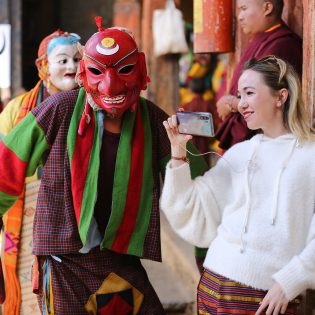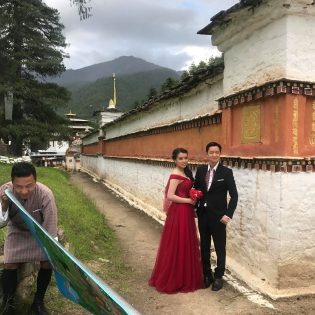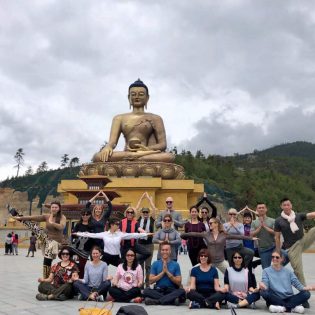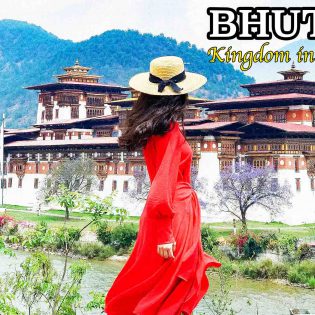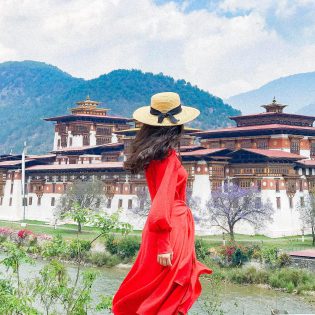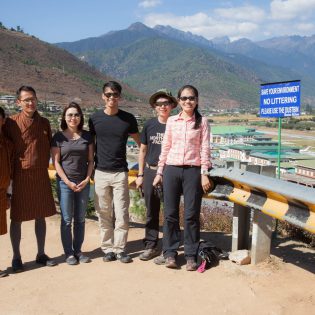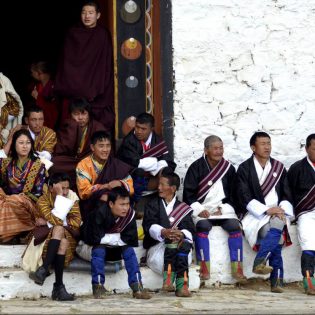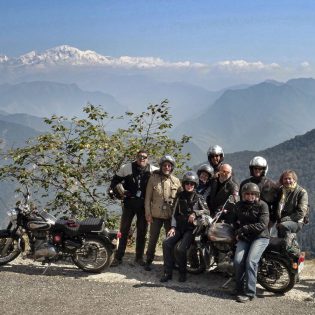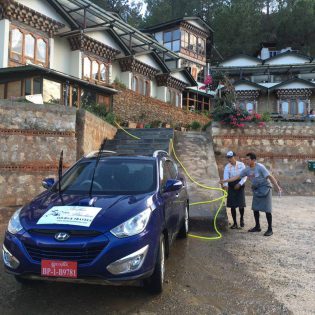Bhutan Photography Tour
INTRODUCTION:
Bhutan is a land filled with snow-capped peaks, glaciers, sparkling lakes, raging rivers, green terraced fields and flower-strewn valleys. The North is dominated by the high peaks of the Himalayas. The inner central region is filled with temperate valleys and the South is where the steamy tropical jungles are found.
Restrictions on the numbers of tourists help to preserve the country’s natural assets and a way of life that has remained unchanged for millennium. Visitors will see monasteries perched at the tops of mountain peaks, ancient Buddhist art and sculpture, dense forests and
spectacular valleys.
ITINERARY OVERVIEW
- DAY 01: ARRIVE PARO- NIGHT IN THIMPHU
- DAY 02: THIMPHU
- DAY 03: THIMPHU-PHOBJIKHA
- DAY 04: PHOBJIKHA-TRONGSA
- DAY 05: TRONGSA-BUMTHANG
- DAY 06: BUMTHANG
- DAY 07: BUMTHANG-PUNAKHA
- DAY 08: PUNAKHA-PARO
- DAY 09: PARO VALLEY.
- DAY 10: FAREWELL
DAY 01: Fly Into Bhutan.
- Altitude: 2,250 meters
Morning flight into Paro, Bhutan. On this flight, you can see breath taking views of the Great Himalayas. Upon arrival at Paro International Airport, you will be welcomed to the Kingdom by your guide. Lunch served in Paro. After lunch drive to Thimphu 2 – 3 hours.
The drive from Paro to Thimphu is spectacularly scenic one will be greeted by magnificent, monasteries and stupas in the valleys and mountain tops. Overnight Thimphu at Hotel located in the town.

DAY 02: Thimphu.
Full day of sightseeing. Some of the highlights of Thimphu include:
- Visit the weekly Thimphu market.
- Change money at the Bhutan National Bank
- Purchase world’s most beautiful postage stamps.
- Visit the Arts and crafts school and the Traditional Medicine Institute.
- Visit Memorial Chorten to honour memory of Late King Jigme Dorji Wangchuck, popularly known
- as the Father of Modern Bhutan. A multi-storied
- stupa that will introduce you to the vitality of Tantric
- Buddhism.
- Observe traditional paper making from Daphnia and
Edgeworthia - Visit Botanical garden (Zoo) where one can see Yak
and Takin, the National wild animal of Bhutan. - Drive up to viewpoint and take a hike beyond to see
the clear picture of Thimphu Valley. - Downtown Thimphu on foot visiting Handicrafts and other Arts & Crafts stores. Buy stunning kiras
which can be used and bed covers or wall decoration, jewelry’s and many more. Overnight Thimphu.
DAY 03: Thimphu- Phobjikha Valley
- Altitude: 2900 meters
- Distance: 155 kms
- Estimated driving time: 5 hours
After breakfast drive to Gangtey and Phobjikha valley. Phobjikha valley has been declared as the first eco-tourism destination of Bhutan by the Royal Society for Protection of Nature (RSPN).
The valley falls under the Black Mountain Natural Park. Phobjikha valley is the winter home to rare and endangered black necked cranes (grus nigricllis), which migrate, in large flocks to Bhutan from Tibet & Sikang, Yunnan and Tonkin in eastern China. For centuries the cranes have captured the human imagination with their intelligence, poise, sociality, beauty and freedom, which have given rise to several myths, legends, folktales and songs.
In 1998 there were about 250 cranes and the numbers are increasing.
Although the cranes fly back to their summer homes in mid – late February, there may be a couple of birds that have not yet flown to their summer homes in Tibet and China.
There are lots of other wild animals in the surrounding valleys like wild boar, barking deer, Himalayan black bear, red fox, leopard and many species of birds. Overnight Phobjikha at Hotel.

DAY 04: Phobjikha – Trongsa
- Altitude: 2200 meters
- Distance: 120 kms
- Estimated driving time: 5 hours
Today morning after breakfast we will visit the Nature Education centre, the carpet factory and the Sacred Gangtey Monastery, which dominates the valley.
After Lunch, continue your journey towards Central Bhutan. Check in for Overnight at Hotel.
DAY 05: Trongsa – Bumthang
- Altitude: 2800 meters
- Distance: 68 kms
- Estimated driving time: 2 hours
Trongsa is the ancestral home of Bhutan’s Royal Family. Both the First and Second King ruled the Kingdom from this ancient seat. All the Kings of Bhutan has to become Trongsa Penlop (Honorary post of Governor) prior to being crowned as the Druk Gyalpo (King of Bhutan).
Trongsa Dzong (fort), one of the largest in the country was first built is 1648 and later enlarged many times. Because of being situated on a highly commanding position on the only connecting route between the eastern and western sectors (where trail actually runs through the Dzong), the Trongsa Penlop was able to control the whole of eastern region very effectively for many centuries.
Visit the ancient watch tower (Ta Dzong), which is situated just above the town.
After lunch, drive to Bumthang. The drive to Bumthang takes 2-3 hrs. Tales of the great Guru Padmasambhava dominates this holy valley. View the Jakar Dzong “The Castle of White Bird”.
A stop will be made on the way in the Chumey Valley where one can see girls weaving Yatha the traditional woollen material being used. Overnight Bumthang.

DAY 06: Bumthang
Different from all the other valleys in Bhutan, Bumthang is very spacious and open ranging in altitude from 2,600m to 4,000m.
Bumthang is a heaven for hikers and trekkers, not to mention the numerous beautiful and important Buddhist monasteries and pilgrimage sites, making it the Cultural and Historic center of Bhutan.
One could spend months exploring this fascinating valley. Almost every little valley or hill has a background of interesting myths and legends about Kings, Buddhist masters and Serpents.
Bumthang is combined of four main valleys, Chumey, Tang, Ura and Choekhor (Jakar). Commonly known as Jakar valley where you can see a little bit of modern touch with Swiss Influences. Visits to the important cultural and historic sites in the special valley.
Overnight Bumthang.
DAY 07: Bumthang- Punakha
- Altitude: 1300 meters
- Distance:212 kms
- Estimated driving time: 8 hours
Today after breakfast we will drive to punakha valley with sightseeing en-route.
We will stop at certain places for tea/refreshments and drive slowly towards punakha valley.
If time permits we will visit the beautiful Punakha Dzong.
Built strategically at the junction of Pho Chhu and Mo Chhurivers in 1637, by Shabdrung Ngawang Namgyal to serve as the religious and administrative centre of the region, Punakha Dzong has played an important role in Bhutan’s history.
Overnight Punakha at Hotel.

DAY 08: Punakha –Paro
- Altitude: 2250 meters
- Distance: 77 kms
- Estimated driving time: 3 hours
Punakha was the winter capital for over 300 years until the time of second King. Punakha Dzong, which dominates the whole area, was built in 1637 by Shabdrung Ngawang Namgyel, and established the central monastic body with 600 monks.
Today, Punakha is still the home for Je Khempo (Chief Abbot) and the central monastic body. Punakha Dzong is one of the most impressive Dzong in the Kingdom.
In the morning we will visit the Chimi Lhakhang. The Chimi Lhakhang, situated on a hillock in the centre of the valley, is dedicated to Lama Drukpa Kuenley, who in the late 15th century used humour, songs and outrageous behaviour to dramatize his teachings and due to this also known as “Divine Madman”.
This temple is also known as the temple of fertility. It is widely believed that couples who do not have children and wanting one, if they pray at this temple, they are usually blessed with a child very soon. It is about 30 minute walk across field from the road to the temple.
In the afternoon drive to Paro for Overnight at
Hotel.
DAY 09: Paro
Morning, hike up to the view point of “Taktsang”,popularly known as Tiger’s Nest Monastery.
The climb up to the viewpoint will take around 1 ½ hours and from there you will enjoy a spectacular view of the monastery clinging to the side of the cliff. Stop for refreshment at the View Point Cafeteria. Then walk further up to the monastery which will tak about 1 hour.
It is said that in the 8th century Guru Rinpoche flew on the back of a tigress from eastern Bhutan to this place and meditated in a cave here for 3 months. The principal Lhakhang (monastery) of the present monastic complex dates from 1692. Taktsang was damaged severely by fire in 1998 but has now been fully restored to its former glory. After visiting the monastery, walk back down to the road on the way stop for lunch at the view point cafeteria and then walk further down to the road point.
On the way, visit Kichu temple, one of the 108 temples built in the 7th century by the Tibetan Later visit King Songsten Gampo.
The story goes that a giant demon lay across the whole area of Tibet and the Himalayas and was preventing the spread of Buddhism. To overcome her, King Songtsen Gampo decided to build 108 temples, which would be placed on all the points of her body. Of these 108 temples, 12 were built in accordance with precise plans.
Thus, it happened that in about the year AD 638 the temple of Jokhang in Lhasa was built over the very heart of the demon.
In the evening relax and overnight at a hotel in Paro.

DAY 10: FAREWELL
After breakfast at the hotel, transfer to the airport for the departure flight. Tashi Delek.
End Of Tour
we hope to provide the ultimate best value for all our guests. We choose some of the finest hotels, offer free upgrades to make our visitors feel the most welcomed and well-taken care of while traveling in Bhutan. We take pride in providing first class accommodations for our travelers.
A wide variety of accommodations are available ranging from luxurious 5-star hotels to cozy little hotels, homestays in traditional Bhutanese homes to camping under the stars. Visitors can be assured of comfort, ambiance and hospitality.
The types of accommodations can be divided into:
- Government Categorized 3 Star Hotels and Resorts
- Luxurious 4 Star Hotels & 5 Star International Hotel Chains
- Village Homestay
- Camping
- Government Categorized 3 Star Hotels & Resorts
Hotels in Bhutan are rated according to a National 5 Star rating System. All Tour Operators are required to provide their guests with Government Categorized Hotels and Resorts, a minimum of 3 Star accommodations so you can be assured of your comfort. Most hotels provide their guests with Basic Necessities, Room Service, Free Wi-fi, Television and some of them also have Fitness Centers and Spas
Luxurious 4 Star Hotels & 5 Star International Hotel Chains
The luxury packages are based on 4 star luxury hotels and 5 star International Hotels Chain (Aman Kora, COMO Uma, Zhiwaling, Le Meridien and Taj Tashi) with extra charges in addition to the Mandatory Daily Tariff of USD $250/person/night.
Village Homestay
Visitors also have the option of spending a night in a traditional Bhutanese Farm House with a Bhutanese family. Agriculture is still one of the major sources of livelihood among the Bhutanese people and a farm-stay will give you an excellent glimpse into the day-to-day life of a typical Bhutanese family. You’ll be able to observe age old Bhutanese farming traditions as the family goes about its daily tasks. You’ll enjoy delicious home-cooked meals and the unparalleled hospitality of a Bhutanese host.
Camping
There’s nothing like camping in some of the most breath taking landscapes of Bhutan. Visitors embarking on long treks will be provided with tents and whatever other camping equipment is deemed necessary. Regardless of where you stay, visitors can be assured of their comfort and traditional Bhutanese hospitality.
What is included in this tour?
- Wedding ceremony in Bhutanese style
- Tours specified in the itinerary
- Accommodation in 4 star hotel/ Complimentary Deluxe rooms.
- Meals (Breakfast; lunch; dinner, mineral water) as per your choice
- Transportation within Bhutan (Toyota Hiace Bus/High roof)
- Services of experienced and licensed culture tour guide
- Museum fees and other special entry fees
- US $ 10 per pax for Tourism Development Fund
- Visa fee of US$ 40 per person
- Tax and government royalty
Whats not included in this tour.
- Air fare
- Travel and health Insurance( All medical facilities in Bhutan is free )
- Laundry, telephone, mobile, fax and Internet bills (Hotels in Bhutan provide free wifi facilities)
- Tips for guide and driver
- Alcohol, beverages in resorts.
- Shopping and Entertainment
How can we confirm our Bhutan visa and tour?
Your Bhutan Visa and Bhutan tour will be 100% confirmed once the company receives your full payment. You will receive you Bhutan Visa and confirmed tickets 24-48 hours after you transfer us the full tour payment.
When is the best time to travel Bhutan?
You can visit western Bhutan (Thimphu, Paro, Punakha and Wangduephodrang) anytime of the year. Avoid central and eastern Bhutan during the monsoon months of July and August when the weather is sometimes a little wet for sightseeing
Would we need travel insurance?
All visitors in Bhutan are advised to get their insurance coverage from their own country.
Is a tipping standard practice in Bhutan?
Yes, tipping is a standard practice in Bhutan and it is part of a Bhutanese culture. All your service staff such as guide, driver, hotels staff will expect tips from you at the end of the service.
What kind of travel guides can we expect?
Licensed Bhutanese travel guides will introduce you to the many facets of this interesting country. The English-speaking guides undergo regular training and, where required, specialized guides will lead you on bird watching, botany or other special tours.
